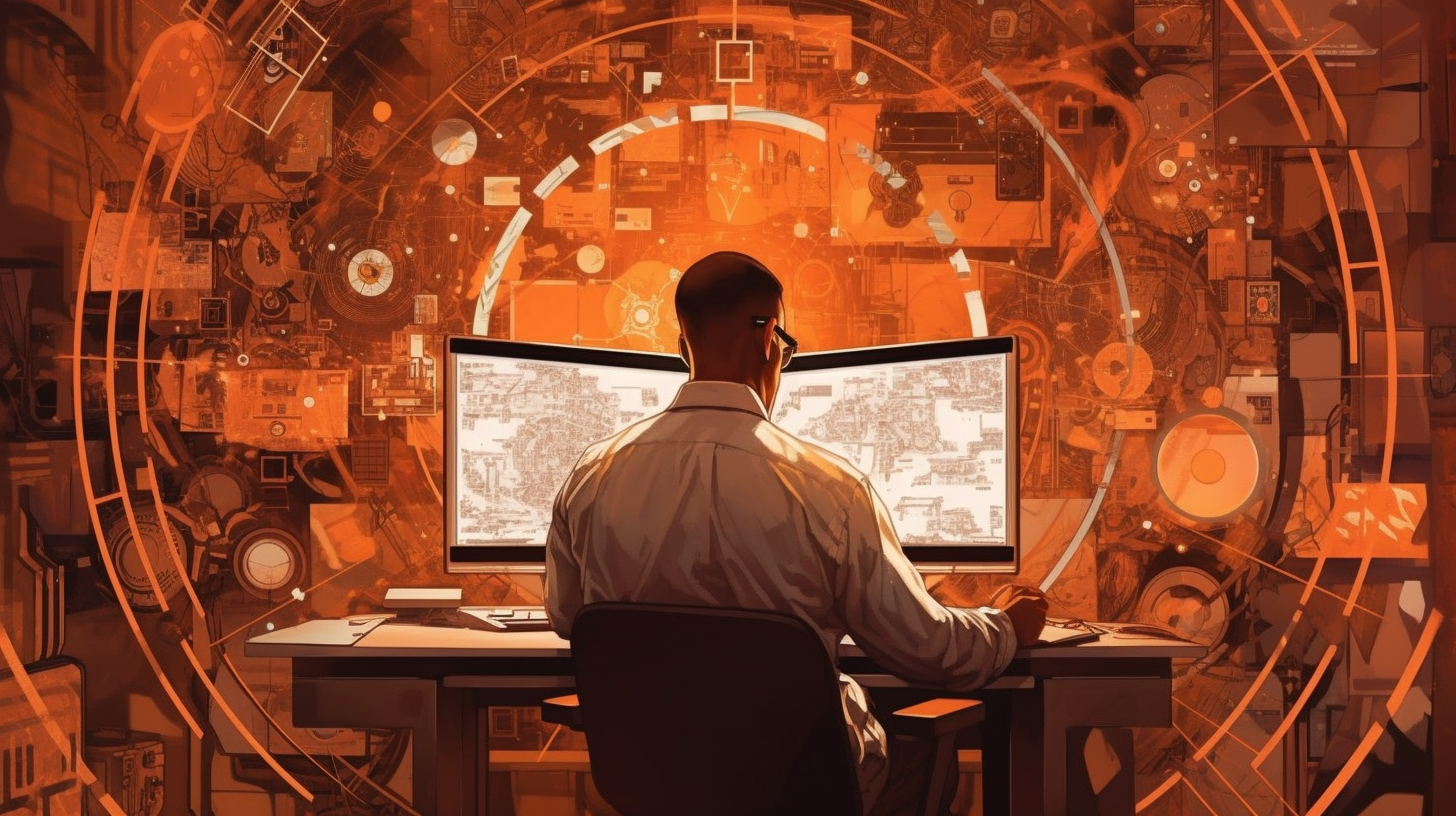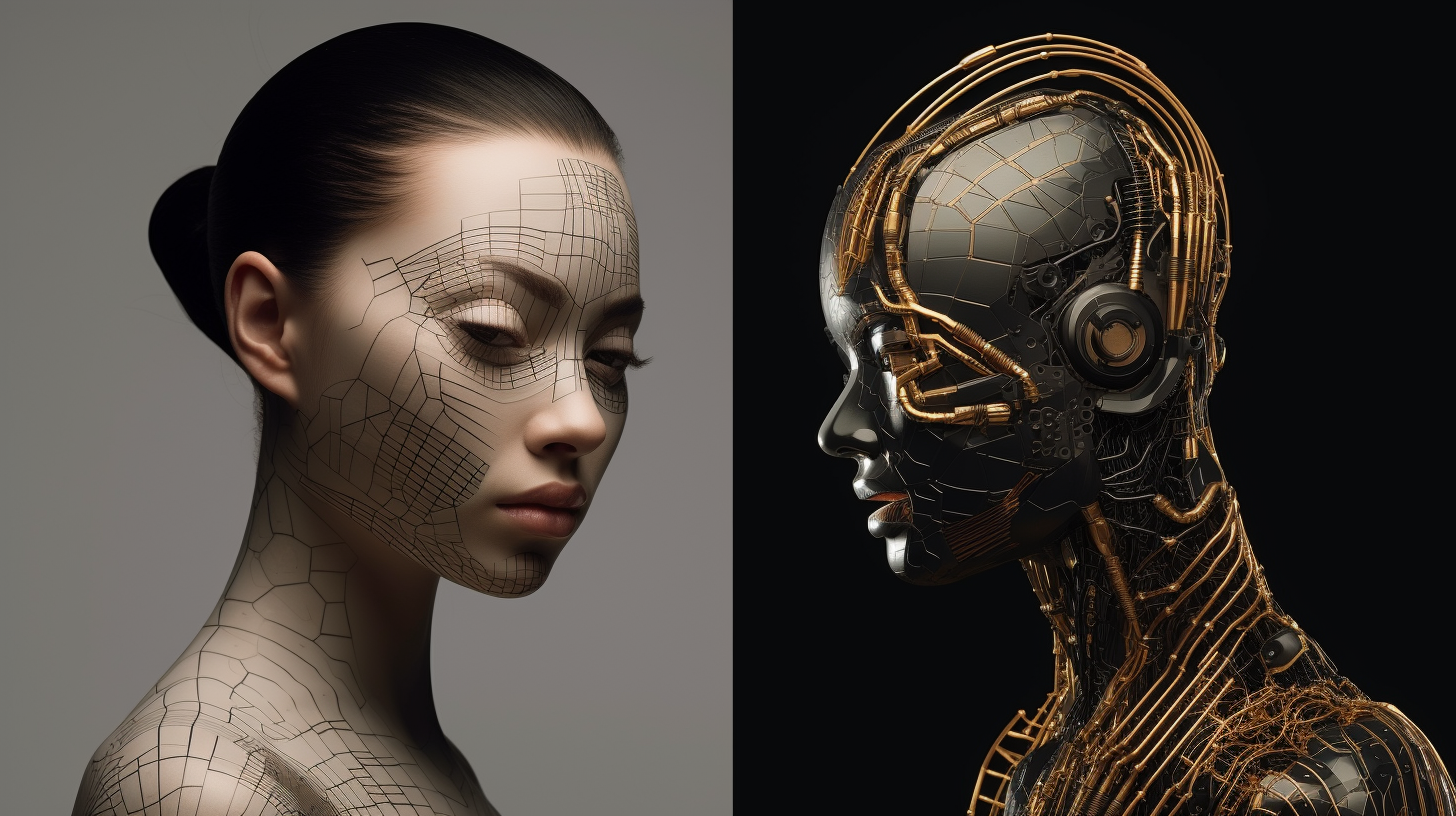Imperfect Strangers
Jay Olman, Lead Data Scientist
Published July 1

Image created by May Kodama (kyu) using Midjourney with the prompt: "a man concentrating in front of a computer with a complicated face, a detailed complex background of ai data and illustrations exploding in detail in an orange and brown color palette in the style of leyendecker, symmetrical composition."
What is ChatGPT? Who is ChatGPT? I think I know: ChatGPT is a random stranger on the internet — a well-read, extremely polite, conflict-averse stranger, but a stranger nonetheless.
Over the past several months, I’ve really enjoyed marveling at generative AI and large language models (LLMs). I’ve had conversations with ChatGPT about a wide variety of topics (with varying degrees of success), including documenting Python code, figuring out which bad movies I’d enjoy watching, mimicking the writing styles of famous authors, exploring the legal justifications for being sent to jail in a game of Monopoly, and choosing the name for a new Slack channel (#they-robot, inspired by I, Robot). At first, I was trying to use it as if it were a tool that I needed to learn how to wield, but that felt clunky — even inauthentic. My expectations were misaligned: not necessarily high or low, but on the wrong scale entirely. I was intimidated, thinking I didn’t have a good enough use case, and was put off by articles on how to write the perfect prompt. I took a step back, asked whatever was on my mind, and started thanking it when I was appreciative. That’s when I realized I’d been training for ChatGPT my whole life; I just needed to talk to it like someone I was meeting for the first time.
I like to think interactions with ChatGPT are like interactions with another person. Should I trust them? Maybe! Would I rely on them for factual information? Sure, sometimes, but not for everything. No matter the topic, consider the stakes when interacting with AI: How much does it matter if it's wrong? What are the consequences if you incorrectly assume it's reputable and act on its output? Getting an unhelpful movie recommendation isn’t the same as getting bad financial, medical, or legal advice.
Keep in mind who you’re speaking with. For every green thumb helping people save their houseplants or wily spreadsheet guru teaching people to make peace with array formulas, there are middle-schoolers masquerading as relationship experts and adult-passing commenters allergic to humility. Remember that AI can be any and all of these people, and this can change from moment to moment. ChatGPT guesses the right answers and presents its conclusions with confidence. It’s right a lot and it’s wrong a lot, just like a real person.

Image created by May Kodama (kyu) by first asking ChatGPT to "Describe what you look like," and then generating images of its response through Midjourney with the prompt: "As an AI language model, I do not have a physical form, so I do not have an appearance."
OK, so ChatGPT isn’t your doctor, lawyer, or therapist. One thing it can be: your intern. It has studied everything — everything — and is super eager to help, but it has no real-world work experience and doesn’t know how to apply its knowledge. That’s where you come in. ChatGPT has absolutely zero understanding of what you care about or the context of your work. It’s there to listen and learn, and can make useful recommendations, but ultimately you’re responsible for what you do with what it produces. Accordingly, the quality of content you’ll get from it is directly proportional to the quality of the inputs it’s given.
The “intelligence” in “artificial intelligence” is assumed to mean knowing all the answers, but what it really means is the ability to learn. This means it’s incumbent upon you, the user, to coach it to provide the most value. Thus, getting what you need out of AI requires communication and leadership much more than technical skill. You have to put yourself in its (digital) shoes and understand what it understands, ask how it drew a specific conclusion, and figure out what it’s missing. You’ll need to fill in the gaps, tell it when you’re not on the same page, and teach it how to communicate most effectively with you. This isn’t materially different from being a good coworker, friend, manager, or parent. Consider this as an opportunity to practice; I suspect we might get better at collaborating with real people by chatting with AI that definitely can’t read our minds.
We should think of our AI interactions as relationships — two-way relationships. This is fundamentally different from searching with Google, going to the theater, or even attending a lecture. You’re not just a consumer of information, you’re also a contributor, helping bring out the best in your counterpart. If you’re unsure whether or how to use AI, give it a try, and explore (remember to be mindful of sharing any proprietary information with cloud-based services like ChatGPT)! With an open mind and some protective skepticism, you should feel free to play along. After all, AI is trying really hard to act like a person. The least you can do is treat it like one.
